Vintage and antique nautical items are highly collectible and include all sorts of brass instruments such as compasses, sextants and telescopes, along with bridge furnishings like ship’s wheels, bells, engine room telegraphs and external navigation lights. They’re all functional and decorative items that hark back to a bygone era of sailing history.
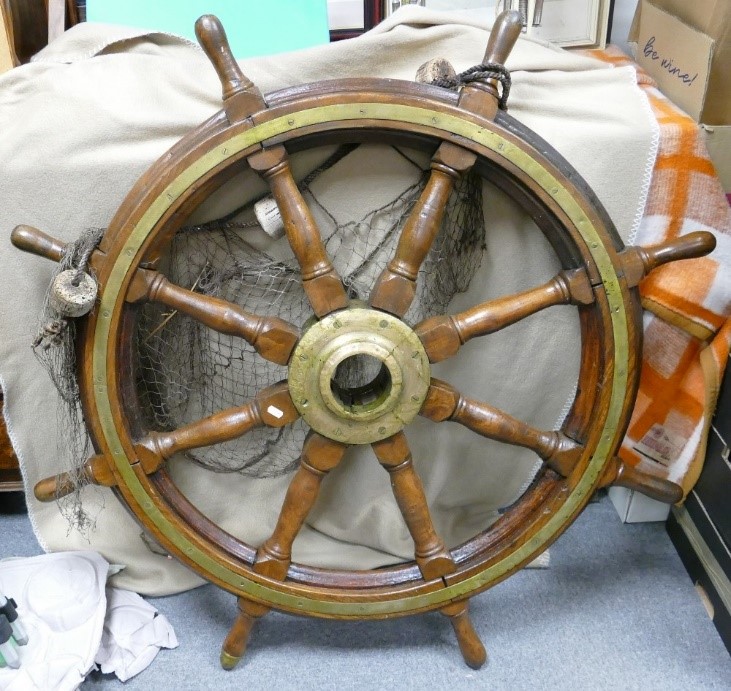
Knowing the provenance of an item is always helpful – this ship’s wheel is understood to have originated from an old London barge. It sold in our November 2021 Fine Art auction for £260.
Their popularity, however, has created a market need that has, in part, been filled by manufacturers of reproduction pieces that can be surprisingly convincing and easily mistaken for the genuine article. While it’s no crime to produce replica pieces and market them appropriately – they’re very appealing, after all – it can be disheartening and frustrating to discover a cherished item, bought under the auspices of being authentic, is in fact a replica; thus, diminished in both sentimental and monetary value.
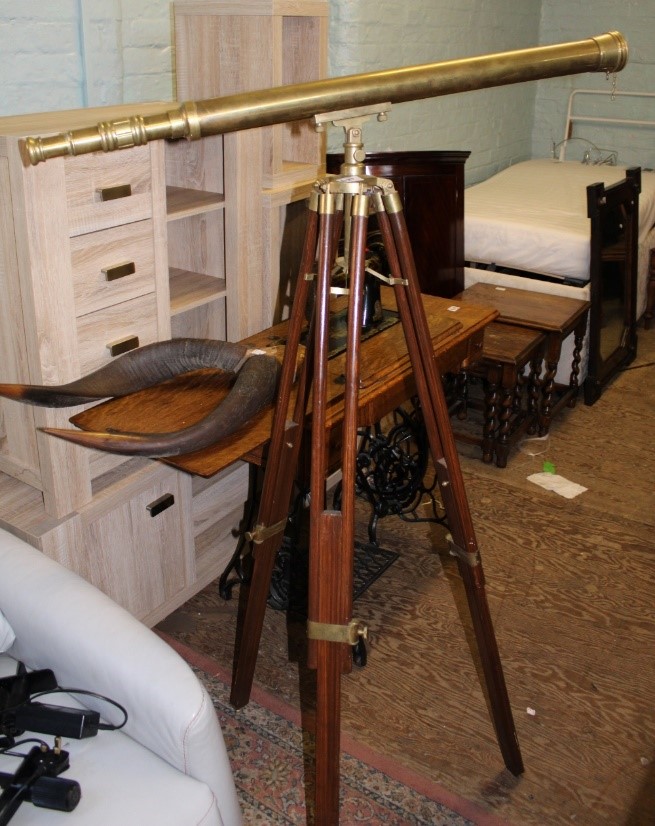
A good example of a reproduction telescope, this lot sold in our January Cobridge sale for a hammer price of £60.

Sold for £85 in our December 2022 Antique & Collectors auction, this telescope is of genuine age – note the duller brass with uneven discolouration, as well as dark tarnishing where it hasn’t been handled. There are also signs of use to the wooden case.
So, how do you tell the difference between reproduction and authentic nautical items to reduce the potential for disappointment?
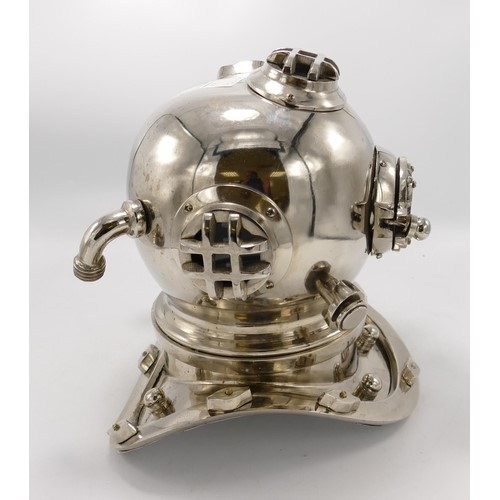
When it comes to the classic divers helmet, genuine ones were made from copper, and so this example instantly stands out. This sold in our January 2022 General sale for £65.
For those searching online, it’s good advice to seek out established antique traders, including reputable auction houses such as Potteries Auctions (that’s us!). Such businesses are more diligent in making the distinction between authentic and replica pieces, with their items having been checked and appraised by a knowledgeable valuer.
If conducting a more generic internet search, you might return results where the same images are repeated on multiple item listings. These and any that show the item complete with a pristine-looking presentation box will absolutely be replicas. Of course, genuine items can be found online, but great care must be taken if committing to a purchase with a vendor that’s an unknown entity. If an item looks too good to be true, it probably is. Due diligence is key: look at what other items a vendor has to get a better idea of the kind of retailer they are.

Brass compasses are highly popular – the Brunton pocket transit compass (above) is particularly ubiquitous. However, the true authentic version of this compass was manufactured in aluminium, and so all brass examples are fake.
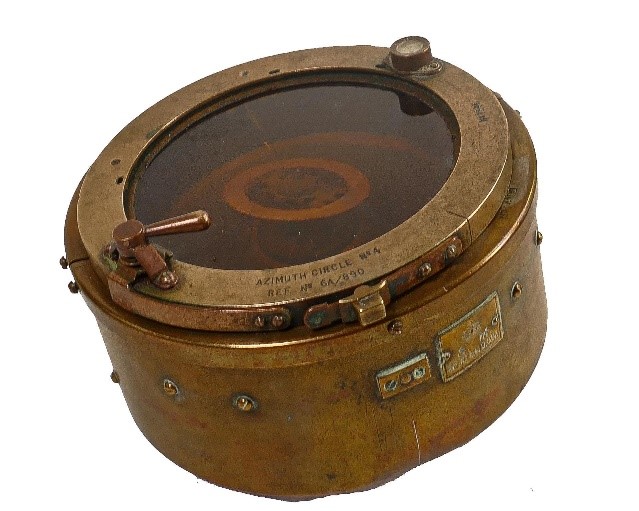
Some brass compasses, however, are genuine. While this one is aeronautical rather than nautical, this RAF aircraft compass sold in our March Fine Art auction for a hammer price of £50.
The best course of action is to inspect an item in-person. Attending a viewing day for an item you might have spotted in an online auction catalogue is absolutely recommended.
It also helps to have a keen eye and an informed base of knowledge – don’t be afraid of doing some research on anything you’re specifically looking for. The differences between genuine and replica items can be subtle, but broadly speaking, a reproduction item is more likely to have a more uniform finish. It might also be brighter and shinier. Some replica producers are known to use chemicals and abrasives to artificially ‘age’ their products, however this often results in a noticeably green tarnishing effect.
Overall, genuine vintage pieces tend to be somewhat duller, with uneven colouration and brown or black tarnishing. It should also show signs of use, with less tarnishing in places where it would have been regularly handled, and more tarnishing elsewhere. A closer inspection may also reveal improper construction in some reproduction items.
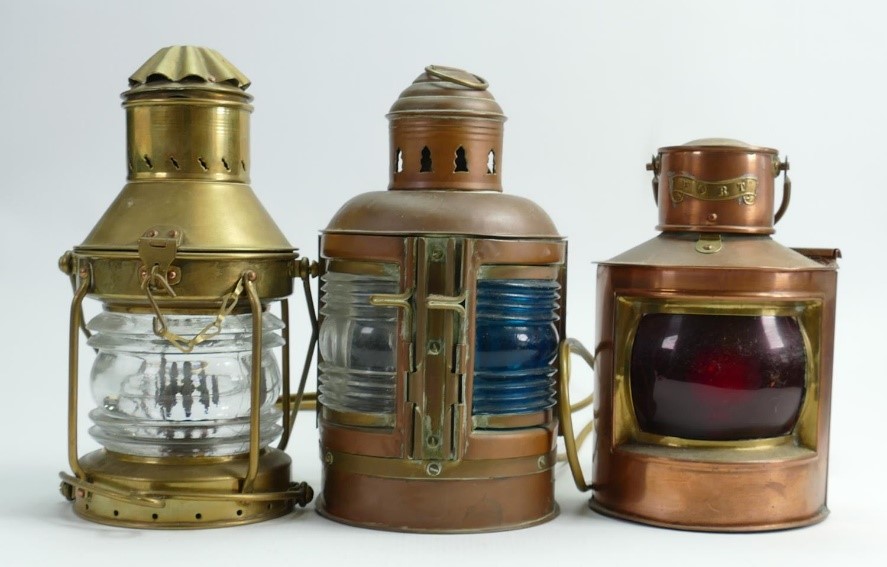
Navigation lanterns are another often imitated subject of nautical collectibles. A good rule of thumb is to look for signs of use and wear. This lot of three lanterns sold in our March 2022 Fine Art auction for a hammer price of £55.
If a piece you’re inspecting comes with a leather pouch or wooden case, then check its condition too. Leather darkens over time where it’s been handled and will be softer, pliable, and occasionally brittle in places, whereas new leather is quite crisp and stiff. A case might also feature handwritten markings – perhaps an owner’s name or a date of issue. With a wooden case, genuine ones are unlikely to be varnished and often show considerable signs of use, being fairly battered and with markings crudely applied, worn or faded. It may be less appealing, but these items were not produced with presentation in mind – rather prioritising functionality.
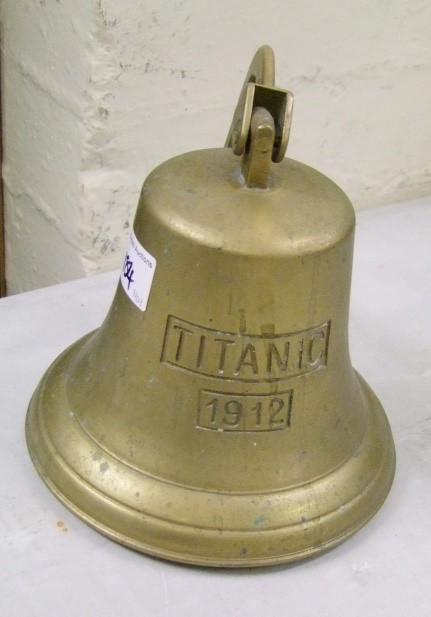
An example of a reproduction ship’s bell, of which there are a great many, this lot sold in our May 2022 Cobridge auction for £15.
Selling & Buying Nautical Items at Auction
Do you have nautical collectibles to sell? Our team of expert valuers is well-placed to advise you on your items. They can assess their authenticity and value, as well as saleability and which of our sales would be best to consign to. To arrange a free appointment for one of our Tuesday valuation days, click here to book an appointment. Alternatively, call 01782 638100 or email enquiries@potteriesauctions.com. We also provide valuations via WhatsApp – simply take some clear pictures on your phone and send them to 07864 667940.
If you’re looking to purchase nautical objects at auction, why not join our Catalogues & Updates WhatsApp group on your phone, where we post links and information on our upcoming auctions. You can also subscribe to our email newsletters, so you can be assured you won’t miss out on any of our sales. Finally, be sure to attend our viewing days to assess any items you’re considering bidding on.
